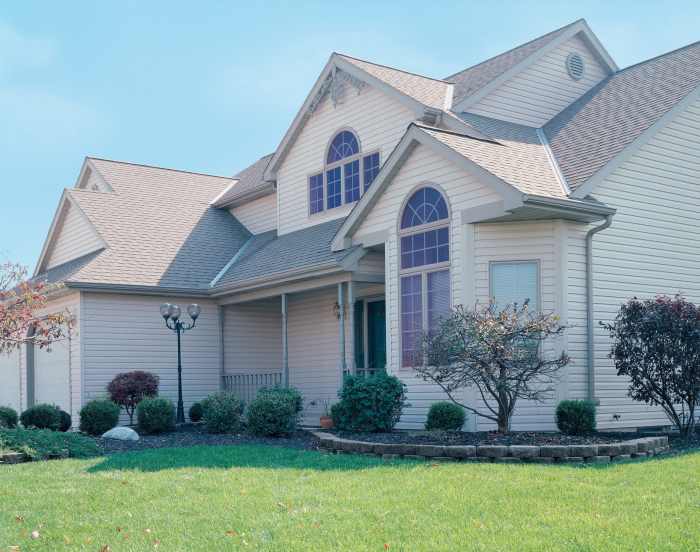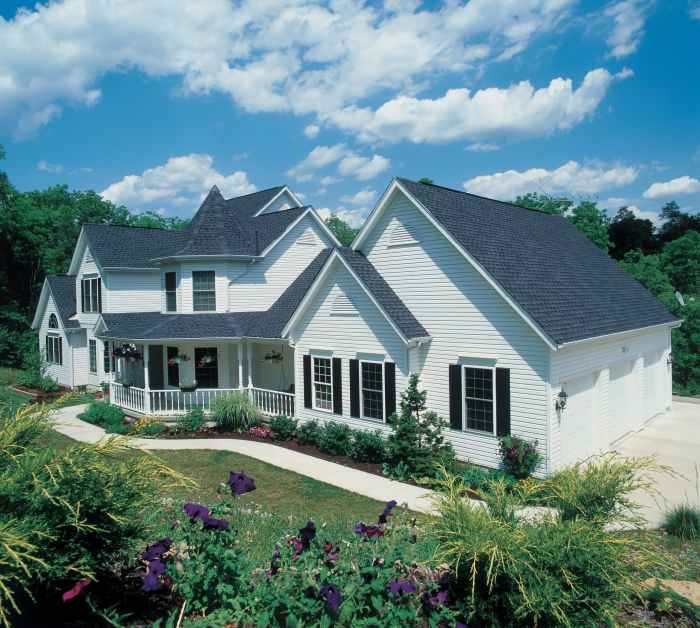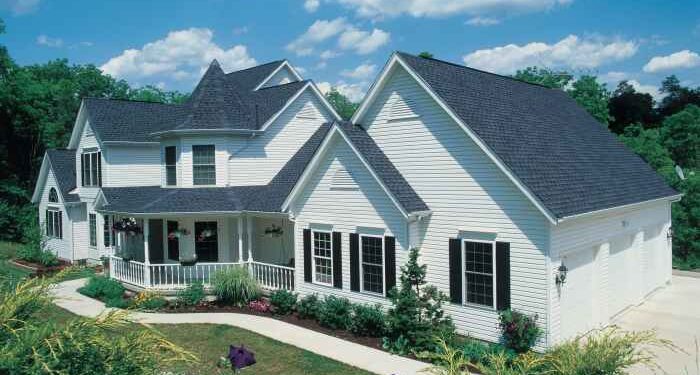Delving into the world of mastic home exteriors, this article aims to shed light on the benefits, types, installation process, design options, and overall advantages of using Mastic for your home's exterior. From durability to curb appeal, get ready to uncover the secrets of Mastic Home Exteriors.
Introduction to Mastic Home Exteriors
Mastic Home Exteriors are a popular choice for homeowners looking to enhance the appearance and durability of their homes. Mastic is a type of vinyl siding known for its low maintenance, durability, and aesthetic appeal. It is available in a wide range of colors and styles, making it a versatile option for various architectural designs.
Benefits of Using Mastic for Home Exteriors
- Low maintenance: Mastic siding requires minimal upkeep, saving homeowners time and money in the long run.
- Durability: Mastic is resistant to harsh weather conditions, such as high winds, rain, and UV rays, ensuring a long-lasting exterior for your home.
- Aesthetic appeal: With a variety of colors and styles to choose from, Mastic allows homeowners to customize their home's exterior to suit their preferences.
Examples of Mastic Home Exteriors in Different Architectural Styles
Whether your home follows a traditional, modern, or colonial architectural style, Mastic siding can complement and enhance the overall look. Here are some examples:
- In a traditional colonial home, Mastic siding in a neutral color like white or cream can provide a classic and timeless look.
- For a modern home with clean lines and a minimalist design, Mastic siding in a bold color like charcoal or navy can add a contemporary touch.
- In a farmhouse-style home, Mastic siding with a woodgrain texture can create a rustic and inviting facade.
Types of Mastic Home Exteriors

When it comes to Mastic Home Exteriors, various materials are used to provide durable and low-maintenance options for homeowners.
Vinyl Siding
Vinyl siding is a popular choice for Mastic Home Exteriors due to its affordability, versatility, and low maintenance requirements. It is durable, resistant to rot and pests, and comes in a wide range of colors and styles.
Aluminum Siding
Aluminum siding is another option for Mastic Home Exteriors that offers durability and resistance to weather elements. It is lightweight, easy to install, and can be painted in different colors to match the home's aesthetic.
Fiber Cement Siding
Fiber cement siding is known for its strength, durability, and fire resistance. It is a low-maintenance option that can mimic the look of wood or stucco without the associated upkeep.
Insulated Siding
Insulated siding, such as Mastic's Structure® Home Insulation System, provides energy efficiency and added protection against the elements. It helps reduce energy costs and can improve the overall comfort of a home.
Steel Siding
Steel siding is a durable option for Mastic Home Exteriors that offers superior protection against harsh weather conditions. It is resistant to fire, insects, and rot, making it a long-lasting choice for homeowners.
Installation Process of Mastic Home Exteriors
When it comes to installing Mastic Home Exteriors, there are several important steps to follow to ensure a successful outcome. Proper preparation of the exterior surface is crucial, as well as understanding common challenges that may arise during the installation process.
Steps involved in installing Mastic siding:
- 1. Measure and prepare the area: Take accurate measurements of the area where the siding will be installed. Ensure the surface is clean, dry, and free of any debris.
- 2. Cut the siding: Using the appropriate tools, cut the siding panels to fit the measurements of the area. Be precise to avoid any gaps or uneven edges.
- 3. Install the starter strip: Begin by installing the starter strip at the bottom of the wall to provide a secure base for the siding panels.
- 4. Install the siding panels: Start at one end and work your way across, securing each panel in place according to the manufacturer's instructions.
- 5. Trim and finish: Once all the siding panels are in place, trim any excess material and add finishing touches to ensure a polished look.
Tips for preparing the exterior surface before Mastic installation:
- 1. Clean the surface thoroughly to remove dirt, mold, and mildew.
- 2. Repair any damaged areas or rotting wood before installing the siding.
- 3. Ensure the surface is flat and smooth to prevent any warping or buckling of the siding panels.
- 4. Consider adding a weather-resistant barrier for added protection against moisture and elements.
Common challenges faced during the installation of Mastic Home Exteriors:
- 1. Warping or buckling of siding panels due to improper installation or uneven surfaces.
- 2. Moisture issues leading to mold or mildew growth behind the siding.
- 3. Difficulty in cutting and fitting the siding panels accurately.
- 4. Color matching and blending with existing exterior features for a cohesive look.
Design Options for Mastic Home Exteriors
When it comes to designing your home exterior with Mastic siding, there are a variety of color options, texture variations, and ways to enhance curb appeal to choose from.
Color Options
Mastic offers a wide range of color options for their siding, allowing homeowners to customize the look of their homes. From classic neutrals to bold and modern hues, there is a color to suit every style and preference.
Texture Variations
In addition to color choices, Mastic also provides different texture variations for their home exteriors. Whether you prefer a smooth finish or a more textured look, Mastic has options to add depth and visual interest to your exterior design.
Enhancing Curb Appeal
Mastic siding can be used in various ways to enhance the curb appeal of your home. For example, combining different colors and textures can create a dynamic look, while adding architectural details like trim and accents can elevate the overall design.
By carefully selecting and combining design elements, Mastic can transform the appearance of your home and boost its curb appeal significantly.
Benefits of Mastic Home Exteriors

Mastic Home Exteriors offer a range of benefits that make them a popular choice among homeowners looking to enhance the aesthetics and durability of their homes.
Energy Efficiency of Mastic Materials
Mastic siding is known for its excellent insulation properties, helping to keep homes cooler in the summer and warmer in the winter. This can lead to reduced energy costs and a more comfortable living environment for residents.
Impact of Mastic Siding on Home Value
Investing in Mastic Home Exteriors can significantly increase the curb appeal and overall value of a property. The durable and low-maintenance nature of Mastic materials can attract potential buyers and contribute to a higher resale value for the home.
Protection from Harsh Weather Conditions
Mastic Home Exteriors are designed to withstand extreme weather conditions, such as heavy rain, strong winds, and intense sunlight. The high-quality materials used in Mastic siding can help protect homes from damage, ensuring long-lasting durability and structural integrity.
Final Summary
Wrapping up our discussion on Mastic Home Exteriors, it's clear that these materials offer a winning combination of durability, design flexibility, and energy efficiency. Whether you're looking to boost your home's value or protect it from the elements, Mastic has got you covered.
Elevate your home's exterior with Mastic today!
Q&A
What are the common types of materials used in Mastic Home Exteriors?
Mastic Home Exteriors typically use materials like vinyl, polymer, and fiber cement to provide durability and design options.
How does Mastic siding impact the energy efficiency of a home?
Mastic siding can enhance energy efficiency by providing insulation and reducing heat loss, resulting in lower energy bills.
What are some common challenges faced during the installation of Mastic Home Exteriors?
Common challenges during installation can include ensuring proper alignment, dealing with uneven surfaces, and weather-related delays.














